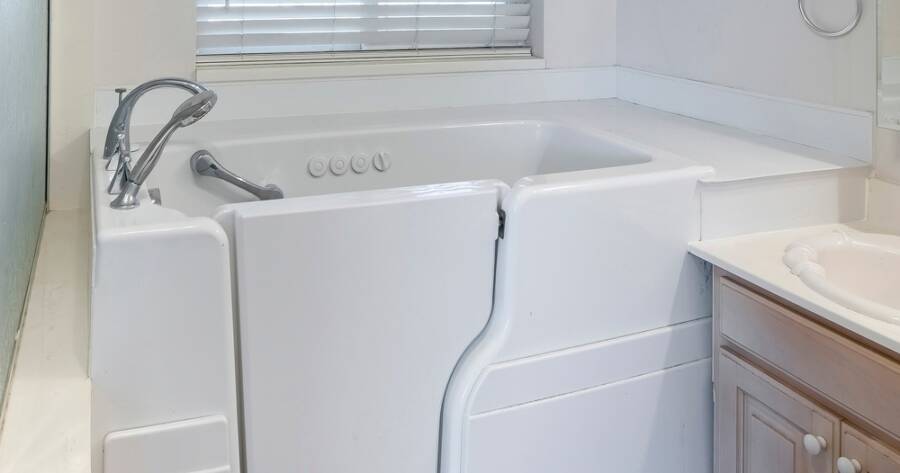Walk-in tubs can offer comfort, accessibility, and safety, making them an appealing option for many senior households. If you’re planning a bathroom update, walk-in tubs could be worth considering due to their unique benefits.
What Makes Walk-In Tubs Appealing
Walk-in tubs are increasingly popular because they offer a safer bathing experience, particularly for those with mobility issues.1 They come with a door that allows users to step into the tub without the need to climb over a high edge. This feature can make them especially appealing to the elderly or anyone who struggles with balance. Furthermore, their often sleek designs ensure they blend well with modern bathroom aesthetics.
Walk-In Tubs and Bathroom Accessibility
Walk-in tubs have become a popular option for improving bathroom accessibility. These tubs are designed to reduce the risk of slips and falls, making them ideal for anyone who may have difficulty with traditional tubs. Some tubs also come with built-in seating, allowing users to bathe without the need to sit directly on the tub floor. For those who use wheelchairs or walkers, certain models offer easy access from a sitting position. However, the suitability of these features can vary depending on the specific needs of the household.
Health Benefits of Walk-In Tubs
For many, the therapeutic benefits of walk-in tubs can be an additional draw.2 Many models come with features such as hydrotherapy jets and heated surfaces, which can potentially relieve muscle pain and improve circulation. This can be a good choice for those suffering from conditions like arthritis or chronic pain. The warm water and massage functions might also help reduce stress, promoting a more relaxing bathing experience. However, the extent of these benefits will depend on the specific tub and the user’s personal health needs.
How To Choose the Right Walk-In Tub
Choosing the right walk-in tub requires careful consideration of both your personal needs and the available space in your bathroom. It’s important to measure the space where the tub will go to ensure a good fit. You may also want to explore different materials, as some tubs are designed for long-term durability while others prioritise comfort. Additionally, researching different brands and models can provide insights into the pros and cons of each. While some tubs may be available without fees for installation, others might require additional services, so it’s always best to inquire about costs upfront.
The Potential Costs of Walk-In Tubs
Walk-in tubs can vary significantly in price depending on the features, materials, and installation requirements. Basic models are often more affordable, while luxury versions with added features like hydrotherapy may come at a higher price. Installation costs may also vary based on the complexity of the project and the size of the tub. For example, larger tubs or those that require specific plumbing adjustments may increase the total expense. Before committing, it’s a good idea to shop around and compare quotes from different providers.
Are Walk-In Tubs Worth the Investment?
For many households, walk-in tubs could be a sound investment, especially when it comes to improving long-term accessibility. They can add value to your home and potentially enhance your daily comfort. Additionally, for individuals with specific health needs, the therapeutic benefits of certain walk-in tub features might justify the expense. However, the true value will depend on personal circumstances, and it’s important to weigh the costs against the potential benefits.
Learn More Today!
Walk-in tubs can provide a practical solution for enhancing bathroom accessibility and future-proofing your home. Their design can make them ideal for individuals with mobility challenges, reducing the risk of falls and ensuring easier, safer bathing. By carefully considering your space, budget, and accessibility requirements, you can ensure that a walk-in tub meets both your immediate and future needs.
